Early Voyages
Orion Colonies
Colony worlds in the Pi 3 Orionis System[2] under the influence of the Orions. Captain Pike considered leaving Starfleet and settling there after an incident on Rigel VII.[1]
References
Neptune
Neptune, a blue-hued Class-J world,[2] was the eighth planet in the Sol System. The Talosians viewed an image of the Sol System while accessing the U.S.S. Enterprise NCC-1701‘s computer.[1] Neptune was 49,528 kilometers in diameter and was located nearly 4.5 billion kilometers from Sol. Neptune’s surface temperature was -225°C, and the planet had a rotation period of 0.67 days. Neptune’s year was equal to 164.8 Earth years, and the planet had a gravity of 1.19 g. Neptune had eight moons, including Triton and Nereid.[2]
References
Mojave

Mojave (TOS-00)
Home of U.S.S. Enterprise NCC-1701 Captain Christopher Pike, who described it as a “nice little town” surrounded by fifty miles of parkland, though it was once a desert, with “flowing sand, [and] cactus.”[1]
References
Minshara Class

Earth (ENT-78)
Vulcan designation for a planet suitable for humanoid life. Upon encountering a new planet in 2151, T’Pol suggested launching automated probes to the surface to ascertain whether or not it was Minshara-class.[2] Presumably, the term was the origin for the later Class-M designation.[1]
References
- 1. “The Cage.” Star Trek, Episode 0. Television. 1965 (Unaired).
- 2. “Strange New World.” Star Trek: Enterprise, Episode 4. Television. 10 October 2001.
Mercury
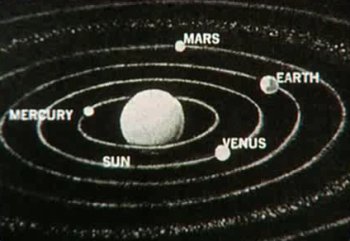
Sol System (TOS-00)
Mercury was the innermost planet in the Sol System. The Talosians viewed an image of the Sol System while accessing the U.S.S. Enterprise NCC-1701‘s computer.[1] Mercury, a Class-B planet, was 4878 kilometers in diameter, and had surface temperatures ranging from -180°C to 430°C. Located 57,910,000 kilometers from Sol, Mercury took only 87.97 days to complete its orbit; one rotation was equal to 58.7 Earth days, and its gravity was 0.38 g. Mercury had no moons.[2]
References
Mars
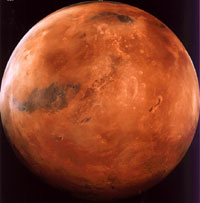
Mars (STSC)
Mars was the fourth planet in the Sol System. The Talosians viewed an image of the Sol System while accessing the U.S.S. Enterprise NCC-1701‘s computer in 2254.[1] Mars was colonized by Humans in 2103.[3] By 2155, terraforming efforts had brought the planet’s original Class-K atmosphere[6] to the verge of breathability.[4] By the 24th century, Mars had become a Class-M planet.[5] Mars had a diameter of 6790 kilometers and took 24 hours 37 minutes to complete one rotation; gravity was 0.38 g. Mars was located 227,940,000 kilometers from Sol and took 686.9 days to complete one revolution around the star. Mars had two asteroidal moons, Phobos and Deimos.[6] Orbital facilities included the Utopia Planitia Fleet Yards.[2]
References
Marrat Nebula
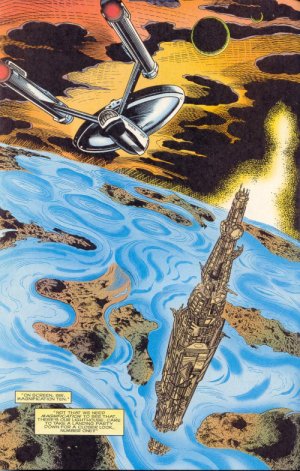
Marrat Nebula (EV MVL #2)
A treacherous expanse of charged gas clouds and ion storms where privateers and brigands would prey on commercial traffic. Notable landmarks include Starbase 13 and Pharos.[1]
References
Luna
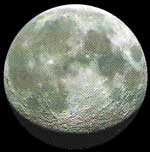
Luna (STSC)
Luna, commonly known simply as “the Moon,” was a Class-D world orbiting Earth.[4] By the late 24th century, more than 50 million people lived on the Moon.[3] The Talosians viewed several images about Earth’s Moon and programs to study and explore it while accessing the U.S.S. Enterprise NCC-1701‘s computer in 2254.[1] The Copernicus Ship Yards were located in orbit, with office facilities on the surface; the U.S.S. Hathaway NCC-2593 was built there.[2] Other points of interest on the Moon included Tranquility Base, where Apollo 11 landed in July 1969; as well as Lake Armstrong and New Berlin.[3] See also: Apollo program, Armstrong, Neil, Kennedy, John F., Lunar probe, Ranger probe.
References
Earth
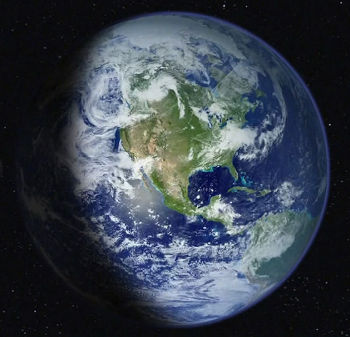
Earth (TOS-21)

Earth (ENT-78)
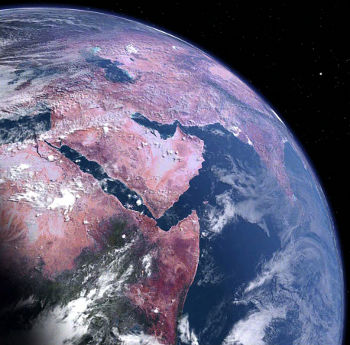
Earth (TOS-55)
Class-M. Earth is the third planet in the Sol System[1] in Sector 001[7] and homeworld of Humans. In 2254, the Talosians viewed an image of the Sol System and many images of Earth’s history while accessing the U.S.S. Enterprise NCC-1701‘s computer.[1] Earth became one of the founding members of the United Federation of Planets in 2161,[15] following the Romulan War,[6] and served as that body’s capital.[5] Starfleet Command and Starfleet Academy were based in San Francisco,[2, 3] while the offices of the Federation President[9] and the Federation Council chamber were located in Paris.[22] The planet hosted several advanced orbital habitats,[2] Starfleet spacedocks,[4] and satellite networks, including Federation communications networks.[12]
› Continue reading
Planet, Class-N
Reducing. Age ranged from 3-10 billion years. Diameter was 10,000 to 15,000 km. Typically located in the Ecosphere of a planetary system. High surface temperatures due to greenhouse effect; water existed only as vapor. Atmosphere was extremely dense, consisting mostly of carbon dioxide and sulfides. No known native life forms.[1]
Class-N Planets:
References
Categories
- Animated Series (60)
- Articles (28)
- Books (447)
- Cast & Crew (79)
- Comics (22)
- DS9 (328)
- Early Voyages (125)
- Education (5)
- Enterprise (373)
- Excelsior (36)
- Food (19)
- Games (223)
- Klingon (70)
- Library (1,543)
- Logs (593)
- Lost Era (55)
- Medicine (18)
- Merrimac (1)
- Mirror (35)
- Miscellaneous (13)
- New Frontier (54)
- Next Generation (635)
- Original Series (681)
- Personnel (436)
- Places (369)
- Politics (12)
- Recreation (10)
- SCE (41)
- Science (1)
- Shatnerverse (9)
- Ships (455)
- Site Updates (98)
- Starfleet Academy (86)
- Stargazer (42)
- STO (61)
- Technology (45)
- Titan (59)
- To Boldly Go (1)
- TV/Film (214)
- Uncategorized (4)
- Vanguard (76)
- Voyager (236)
- Weapons (27)
- Xenology (54)